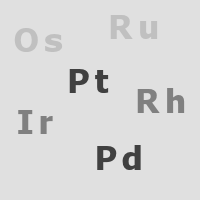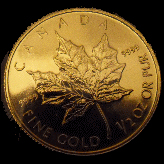Investing in Platinum-Group Metals
by Jerry White Platinum-group metals are like the “other white meat” of precious metals. Investors often see them as substitutes for silver and gold, but their special properties make them useful for diversifying a precious metals portfolio.
Platinum-group metals are like the “other white meat” of precious metals. Investors often see them as substitutes for silver and gold, but their special properties make them useful for diversifying a precious metals portfolio.
Like gold, their production is very limited. Like silver, they are in demand for industrial applications. Their scarcity and growing industrial demand makes them high in value.
The six members of the platinum group are platinum, palladium, rhodium, ruthenium, iridium and osmium. They are produced in very small quantities, mined from platinum ore in South Africa, in placer stream deposits, and as a by-product of nickel and nickel-copper mining. Supplies are constrained.
Over the past few years, growing investment demand has impacted their prices. Because of their unique supply-demand considerations, platinum-group metals (sometimes called PGMs) can be included in a precious metals portfolio on their own merits and can reduce the risk of a straight-gold portfolio through diversification. It is time to learn more about them.
Production of platinum-group metals
South Africa is the main producer of platinum group metals. It is the largest producer of platinum and rhodium and second of palladium. Supplies are constrained by South African mining resources: shortages of skilled labor, electricity and water. PGMs are produced in Russia and North America only as by-products of nickel and copper mining except for two palladium mines, so supply depends on production of the primary metal rather than demand for PGMs. Secondary recovery (that is, from scrap) will likely increase but at a modest rate.
China and India are driving demand
Platinum is popular for jewelry in Japan and China, where demand is large and growing. It is much harder and more durable than gold. Palladium is used in white gold; and ruthenium and iridium are also used in some jewelry alloys.
All platinum group metals are used in industrial applications. Growing middle classes in the two largest developing countries, China and India, are leading drivers of growth in automobile production, which uses platinum, palladium and rhodium for exhaust catalysts. Despite increasing emphasis on development of electric cars and new catalyst technology, tightening emissions standards are likely to lead to higher use of PGMs in these two countries.
Perhaps half of China’s and India’s non-electric cars and trucks will be produced with gasoline engines (including hybrids), while half will have diesels. As between platinum and palladium, more palladium is used in auto catalysts for gasoline engines, while more platinum is used in auto catalysts for diesel engines. Platinum’s higher price is a main stimulus for developing new technologies that will use less-expensive palladium for diesels, making palladium relatively more attractive to investors.
How to buy platinum-group metals for investment
Platinum, palladium and rhodium are available as investment products. Physical-metal-backed platinum and palladium exchange-traded funds (ETFs) and futures-backed platinum exchange-traded notes (ETNs) have joined traditional platinum and palladium futures contracts. ETFs and ETNs are available through securities brokers, while futures are available through commodity brokers.
If you want to hold your platinum-group metal in your hand, coin dealers offer platinum and palladium ingots and coins, including one-ounce and fractional American Platinum Eagles, one-ounce Canadian Platinum and Palladium Maple Leafs, and one-ounce Australian (Perth Mint) Platinum Koalas. Kitco Metals Inc. (kitco.com) also offers rhodium sponge (powder) .999+ fine, in 1 ounce, 5 ounce and 10 ounce quantities to investors.
Platinum and palladium prices have been volatile, reflecting rising and falling industrial and investment demand in the face of limited production.
The future of platinum group metals
While prices will remain volatile, the long-term outlook for platinum-group metals is for higher prices.
Growing industrial and jewelry demand, tightening regulation of emissions, lack of substitution possibilities and tight supplies make for a bullish story based on fundamentals.
Investment demand comes from investors seeking a store of value in the face of inflation and eroding currency values. But far from being just an investment substitute for gold and silver, platinum and palladium merit their own place in a precious metals portfolio. Investors should consider adding platinum and palladium to diversify a portfolio of gold and silver.

Precious Metals Investor’s Guide from TradersGame.com
To learn to invest in gold and silver, avoid pitfalls and save money by buying the form that is appropriate rather than one a salesman wants to sell you, read our precious metals investor’s guide, How to Buy Gold and Silver Today. Read it tonight and start protecting your purchasing power tomorrow.
Articles
Who Sets the Prices of Precious Metals?
Why a Rising Gold Price is Bad News
Hyperflation and Gold: Losing Faith in the Dollar
Invest in Gold to Preserve Your Purchasing Power
Buying Gold to Meet your Investment Goals
Pitfalls to Avoid When Investing in Gold
Making your First Silver Trade
Investing in Platinum-Group Metals
Will the US Government Confiscate Your Gold?

